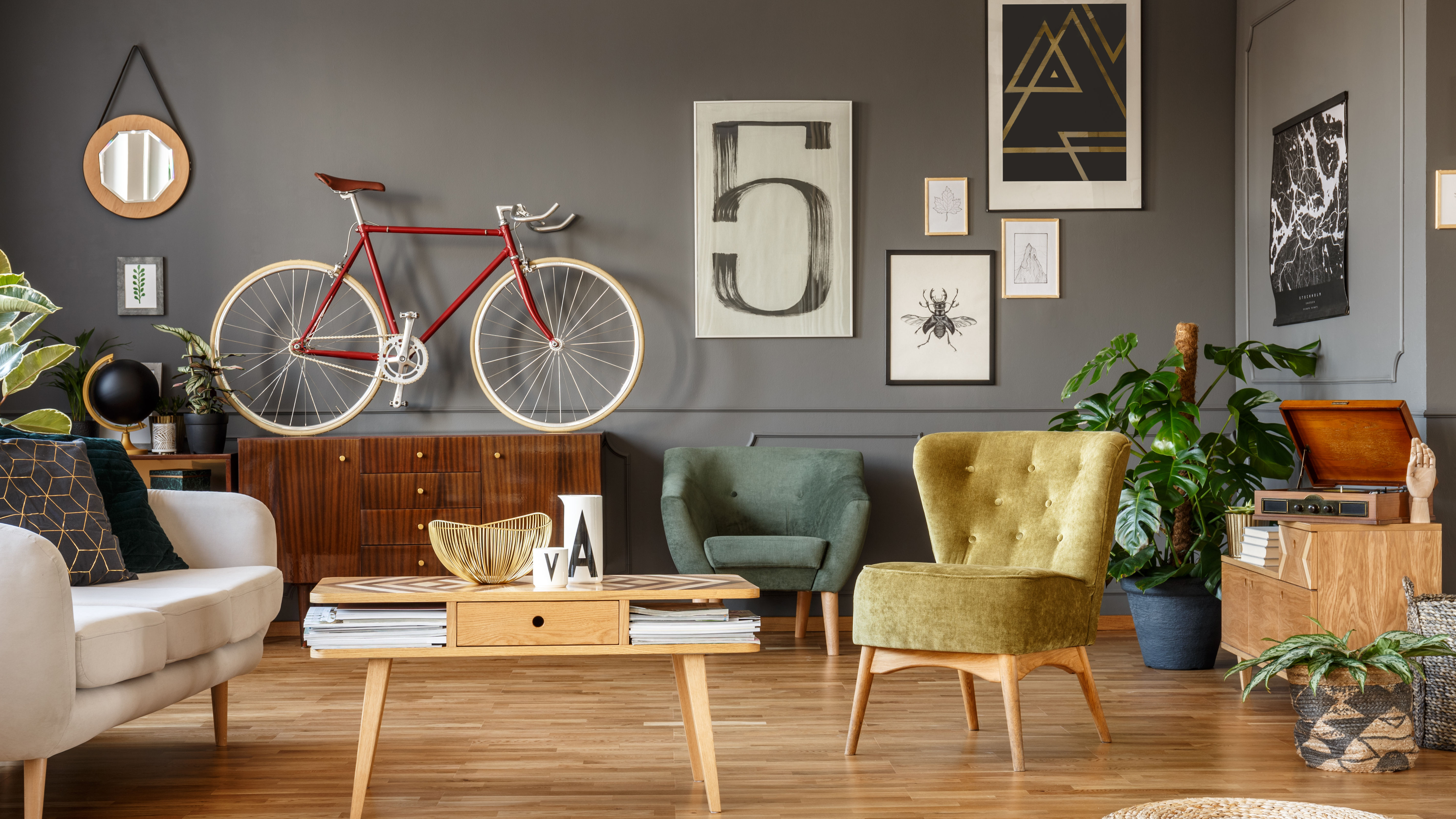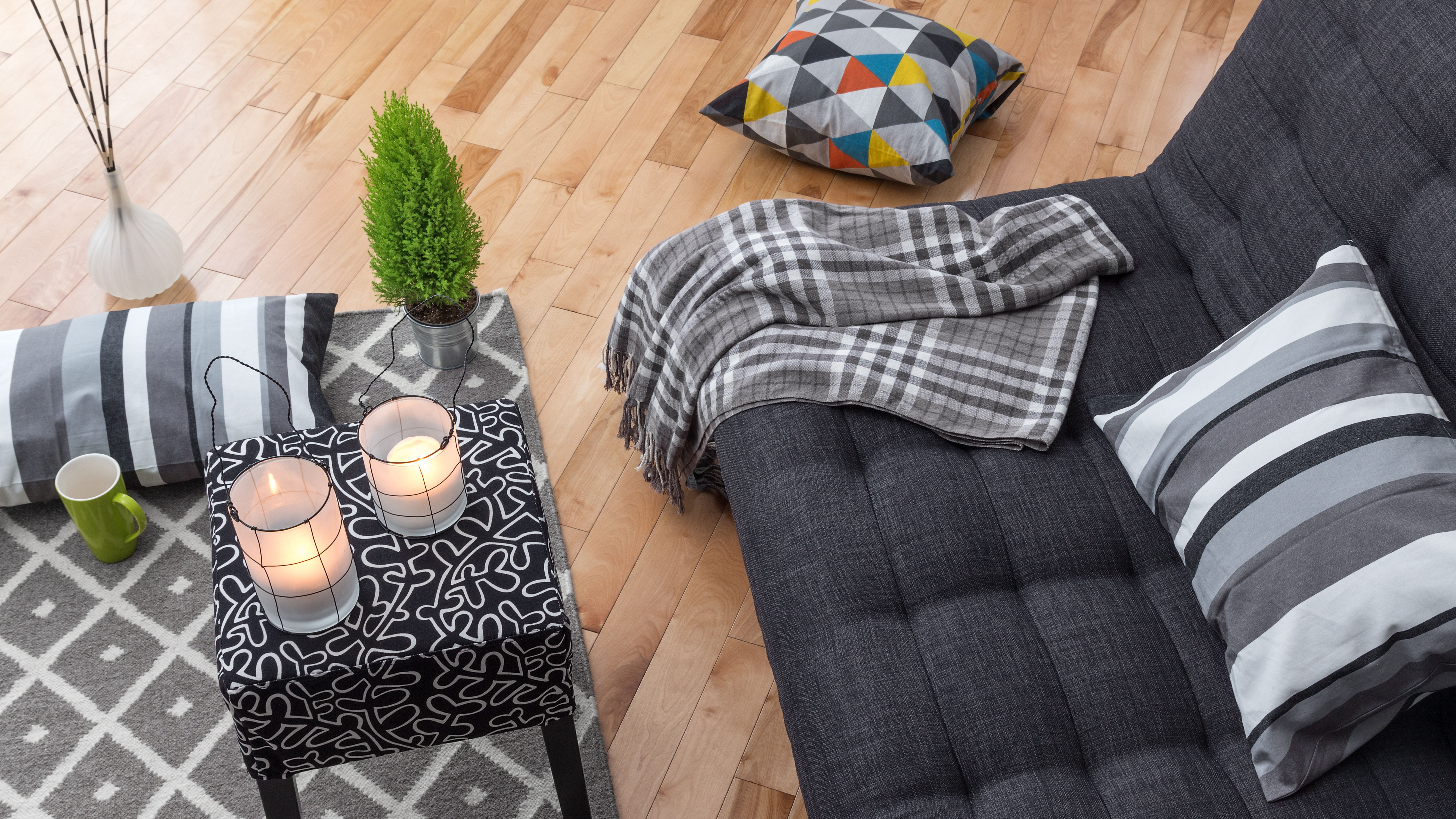Forget decluttering — I tried recluttering my home and here’s what happened
Here's how I reframed my way of thinking about the clutter I have in my home and learned to love it instead

You’ve most probably heard of the term, to declutter. Removing clutter from your home is one of the top tips for starting a clean when you follow the likes of the KonMari method, Swedish death cleaning, or the Osoji ritual.
Decluttering is a great way to remove items from your home through donating, throwing away, or recycling and sets you up for a more minimalistic home.
But, what if you like having things? What if you want to enjoy the items you have in your home without feeling guilty for the space they take up? That’s where the recluttering trend steps in. To reclutter is to head towards the more maximalist approach and learn to live with things. You fill your home with items that make you feel happy, but you also strive to seek a happy medium where you avoid too much clutter that can border on useless or unnecessary.
It may sound like the opposite of everything you’ve ever been told to do when it comes to cleaning and you’d be right to think so. If you read below on what happened to me when I followed the recluttering trend though, you’ll see how it can reframe your mind and help you see your home, and your belongings, in a whole new light.
What is recluttering?

To reclutter is to look at your ‘clutter’ instead with a mindset of what should I keep and what’s important to me, rather than simply looking for things to get rid of. It’s only clutter if you call it that and it’s only classed as clutter if you don’t find a meaning or reason for having it or you can’t find a home for it within your home.
You’re taught that clutter is enemy number one in the home. If you have clutter, you perpetuate the problem of a messy interior design. But, what if your clutter became part of the design of your home? Recluttering is about framing and repurposing these items instead of hiding them away. Plus, once you throw, donate, or recycle an object from your home, it’s no longer yours and that, in turn, can lead to forgotten items and important memories lost.
It’s about looking at your items and deciding whether they hold a sentimental value, rather than just a purpose. It’s also about finding a place to enjoy these items because if you want to hide them away, then maybe they aren’t worth keeping. To reclutter is to learn it’s okay to love what you have even if it looks far busier than the popular minimalist mindset. There’s nothing wrong with having things, especially if they meant something to you.
Get instant access to breaking news, the hottest reviews, great deals and helpful tips.
I tried recluttering — here’s what happened

Through modern society, I’ve always felt like having too much stuff is wrong. When I left school, I got rid of all my books. In terms of sentimentality, I have one singular box under my bed with a small selection of things. For various reasons, I haven’t parted ways with them and they’ve somehow made the various culls I’ve carried out over my life. When I look at the size of the box and the items within it, I feel a little sad that I didn’t keep more. I can’t remember what I got rid of and if I can’t remember that then I have no way of triggering the memory or feeling each item held with it.
I’ve spent the past few months rather intensely rearranging, organizing, and decluttering items from my home and along it, in some ways, throwing away the memories with them.
So, when I heard about the recluttering trend that was increasingly popular across social media and other pockets of the internet, I was intrigued. I’ve spent the past few months rather intensely rearranging, organizing, and decluttering items from my home and along it, in some ways, throwing away the memories with them.
I was ready to try something new and hopefully learn to live with things rather than feel an intense guilt for keeping them.
The cluttercore trend
Cluttercore is an anti-minimalist trend that, alongside recluttering, has risen in popularity on social media over the past few years. Cluttercore at its very core encourages an abundance of belongings, patterns, and design concepts into your home. For cluttercore, you’re recluttering with the idea that you’ll design your home with collections of objects that mean something to you. If they spark joy, as Marie Kondo so famously puts it, is one thing.
But I needed to look at these items with sentimentality or just pure excitement in mind for what the item looks like or what it reminded me of, to figure out if I kept them.
I don’t really have many things like this. Or, at least I didn’t think so. When I began to sift through the sentimental things I’d hidden away, I realized I could sort them into categories. There were a few pieces of artwork from when I was little that I could mix in with some of the artwork that my own daughter has started to do. There were a few CDs that have somehow become ancient and almost trendy to have in their own right. And, importantly, there were pictures I’d never framed but didn’t want to busy my walls with too many things. For recluttering, I had a green light to bring them out of the shadows.
Reshaping my home
There’s a happy medium in the aesthetic of recluttering though. No, you don’t have to fill your house with stuff but also no, you don’t have to throw away anything that has been coined as clutter either. I found I was happiest in that limbo between minimalist and maximalist. I wanted my things because they brought me happiness and memories, but I didn’t want to feel like I had failed my home by making it messy.
Recluttering is about celebrating your stuff. Your home is a representation of you, your family, and your life’s possessions so why hide it away to make it look like no-one lives there? When I ponder over items in my home now I think about whether I want to keep them rather than telling myself I need to throw things away. Before, I would wander around different rooms with a bin bag desperately searching for things to throw away in the hopes that it would tidy up my space.
Display with purpose
Now, I go around searching for items that I want to display with purpose. Maybe that’s repositioning them or maybe it’s just finding a new way to frame them. Then, anything that was left behind that didn’t spark any thoughts or feelings and no longer held a purpose would be considered a clutter that didn’t need to stay.
It’s not about keeping everything and it’s certainly not about throwing everything away. It’s knowing that it’s okay to keep things if you like them, even if they don’t have a specific purpose.
Shark Navigator Lift-Away NV352: was $199 now $149 @ Amazon
This Shark vacuum is our choice for the best vacuum cleaner on the market. It delivers awesome performance at an affordable price, picking up all kinds of debris like pet hair and cereal with ease on both hardwood floor and carpets. It also has a swivel head for multidirectional cleaning.
Bottom line

When it comes to our homes, it’s far too easy to feel guilty about the way they look. Aside from the never-ending battle against dust and dirt, there’s the accumulation of belongings that comes hand-in-hand with life. When I was younger, I felt proud that I only had two suitcases worth of possessions to my name. Now, I have a house with furniture that is larger than the two suitcases put together, but that shouldn’t mean I need to feel guilty to have things.
Recluttering is about reframing the way you look at the things you own. Minimalism has taught us to strive for a life where we’re clever with our organization. We have a larder full of newly-labeled containers that help us hide away our packets and copious ingredients. We fold our underwear in tiny little squares to keep them neat in drawers, if we really want to. But, in the midst of it all, I feel like what I’d really forgotten to do was just love the things I owned and feel pride in showing them off.
It taught me to look at that little box of sentimental items not as a burden or the odd visit down memory lane, but to bring this ‘clutter’ to the fore to show off my life and remind me of things I’ve felt enough joy and attachment in my life to keep in the first place.
More from Tom's Guide
- Are you making these 5 decluttering mistakes?
- I used the KonMari method to declutter my house — and it changed everything
- These 7 things are cluttering your home — here's why and how you should get rid of them for 2024

Grace is a freelance journalist working across homes, lifestyle, gaming and entertainment. You'll find her writing for Tom's Guide, TechRadar, Space.com, and other sites. If she's not rearranging her furniture, decluttering her home, or relaxing in front of the latest streaming series, she'll be typing fervently about any of her much-loved hobbies and interests. To aid her writing, she loves to head down internet rabbit holes for an unprecedented amount of time.

